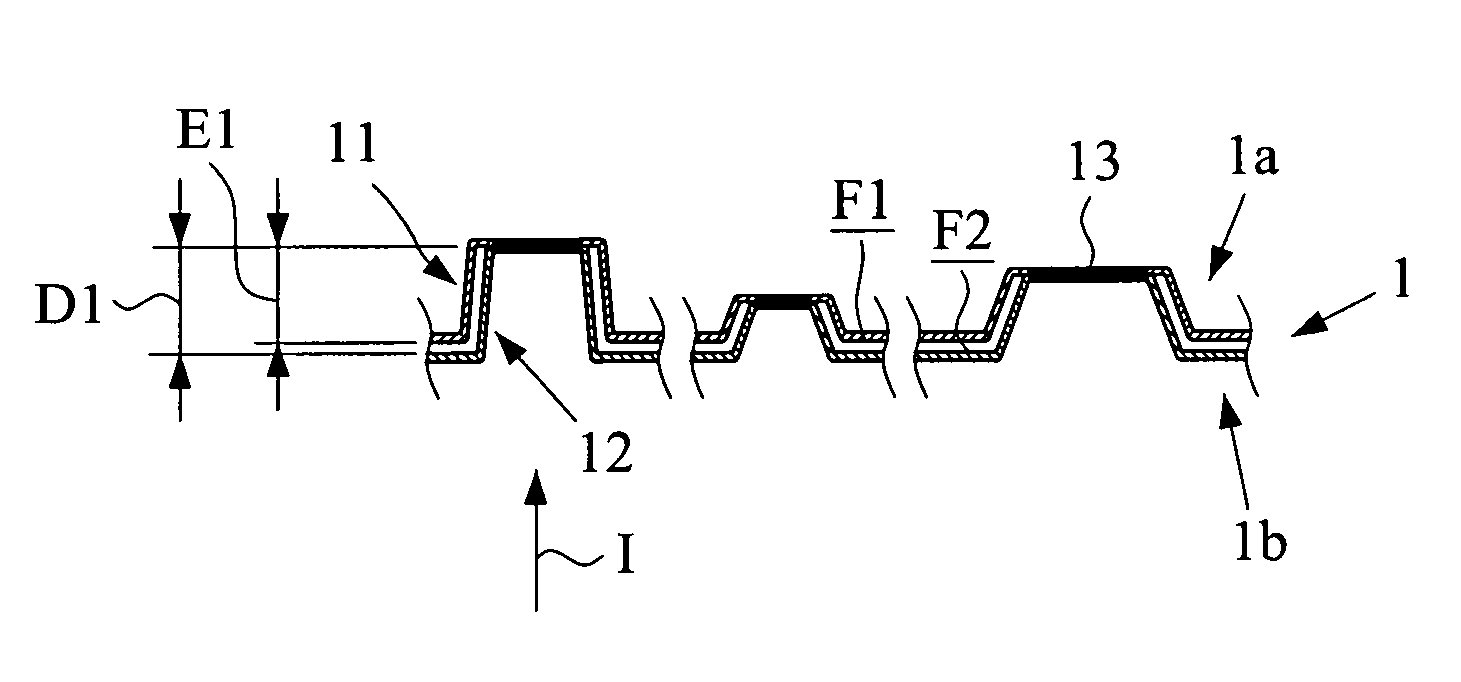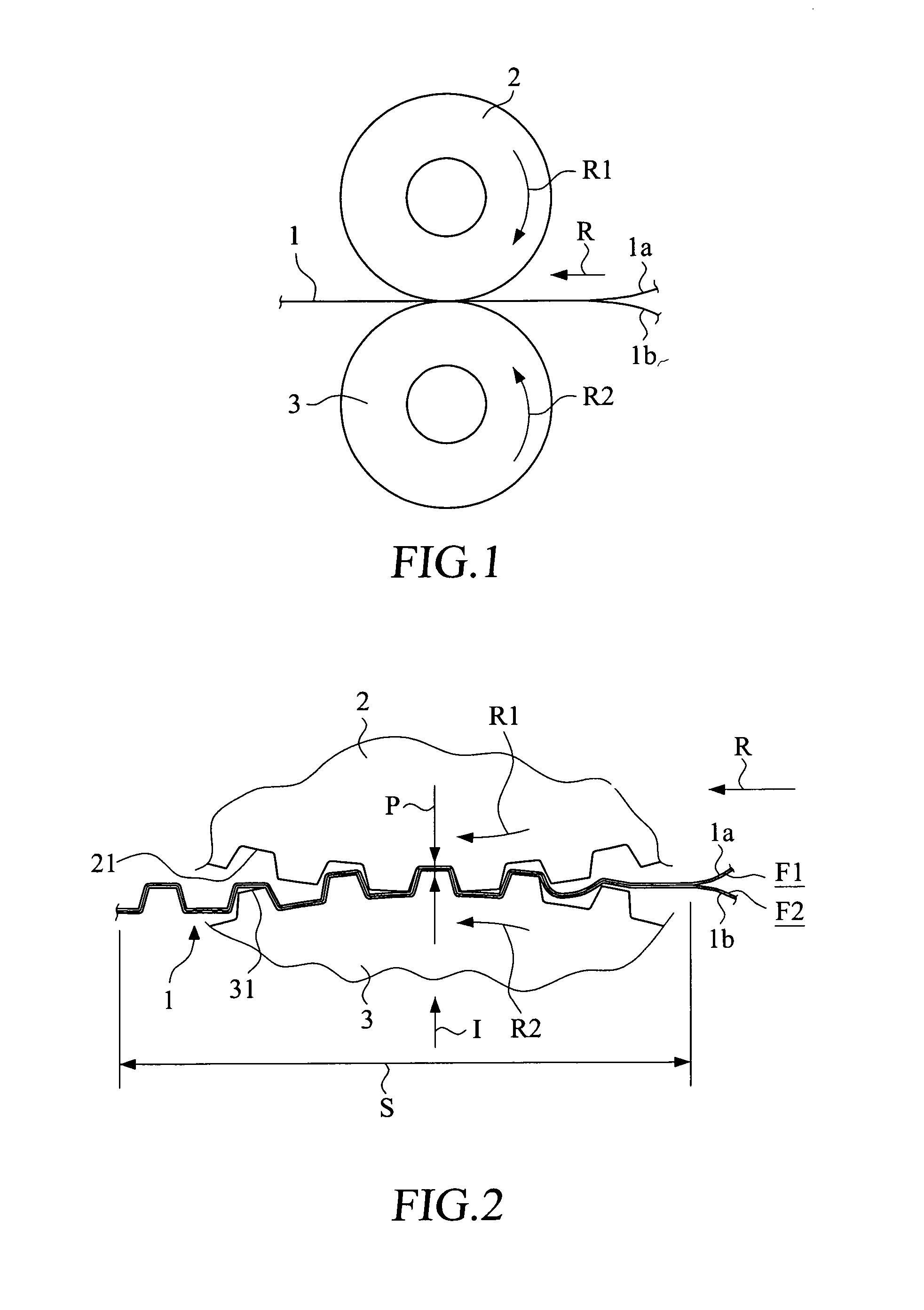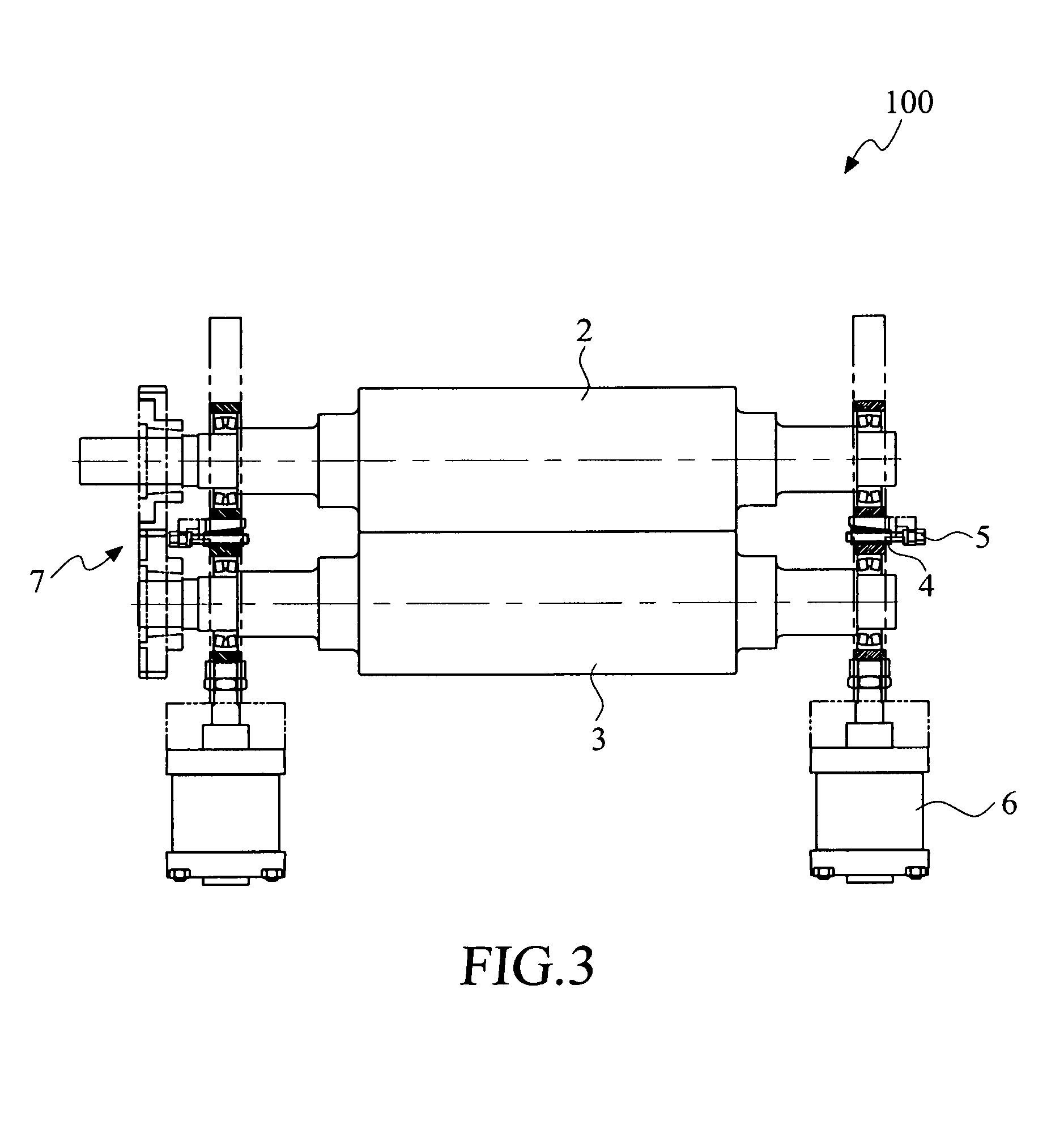Multiply thin paper sheet having press-to-bond structure
a technology of multi-layer paper and bonding structure, which is applied in the field of thin multi-layer paper sheets, can solve the problems of increasing costs, environmental protection problems, and the problem of gluing two or more paper plies together, and achieves the effects of enhancing freshness, preventing the separation of paper layers from each other, and enhancing product stability in us
- Summary
- Abstract
- Description
- Claims
- Application Information
AI Technical Summary
Benefits of technology
Problems solved by technology
Method used
Image
Examples
Embodiment Construction
[0025]With reference to the drawings and in particular to FIG. 1, which shows a schematic side elevational view of presser rollers in accordance with the present invention, a two-ply or multiply thin paper web or sheet 1 comprises a first thin layer of paper 1a and at least one second thin layer of paper 1b. When the first thin paper layer 1a and one second thin paper layer 1b are fed in a feeding path R and are subjected to rolling and pressing by a concave-pattern presser roller 2 that rotates in a first rotation directional R1 and a convex-pattern presser roller 3 that rotates in a second rotational direction R2 to form patterns on surfaces of the multiply thin paper sheet 1 and to have the first thin paper layer 1a and the second thin paper layer 1b bonded together.
[0026]Referring to FIG. 2, an enlarged side elevational view of a portion of the presser rollers of the present invention is shown. As shown, the concave-pattern presser roller 2 has a circumferential surface on which...
PUM
| Property | Measurement | Unit |
|---|---|---|
| height | aaaaa | aaaaa |
| recess depth | aaaaa | aaaaa |
| area | aaaaa | aaaaa |
Abstract
Description
Claims
Application Information
 Login to View More
Login to View More - R&D
- Intellectual Property
- Life Sciences
- Materials
- Tech Scout
- Unparalleled Data Quality
- Higher Quality Content
- 60% Fewer Hallucinations
Browse by: Latest US Patents, China's latest patents, Technical Efficacy Thesaurus, Application Domain, Technology Topic, Popular Technical Reports.
© 2025 PatSnap. All rights reserved.Legal|Privacy policy|Modern Slavery Act Transparency Statement|Sitemap|About US| Contact US: help@patsnap.com



